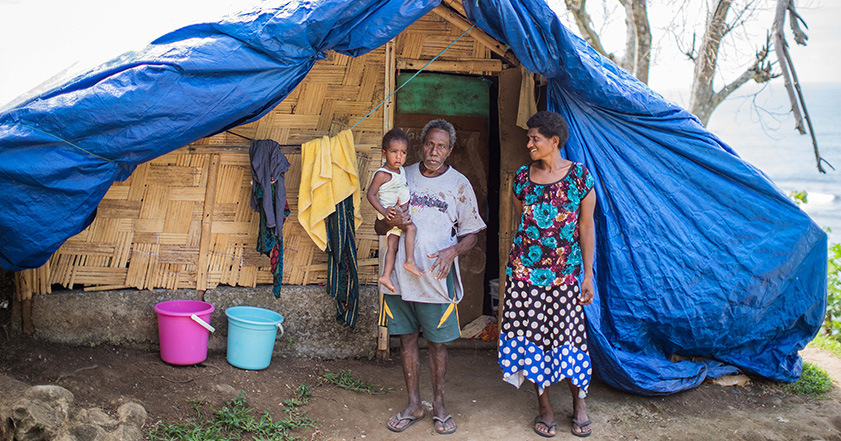Late-August brings with it the peak of the hurricane season. These are storms of terrifying strength and ferocity. People in their path can lose their homes, their livelihoods and even their lives. And climate change is adding to the amount of damage they can cause.
At ShelterBox, we have supported communities affected by weather related disasters, including hurricanes, cyclones, typhoons and tropical storms many times. Below are some of the stories from people we have helped after severe storms. They tell of the storms’ devastating impact, but also of the strength of those facing them to recover and rebuild.
Ginalyn – Super Typhoon Rai, the Philippines, December 2021
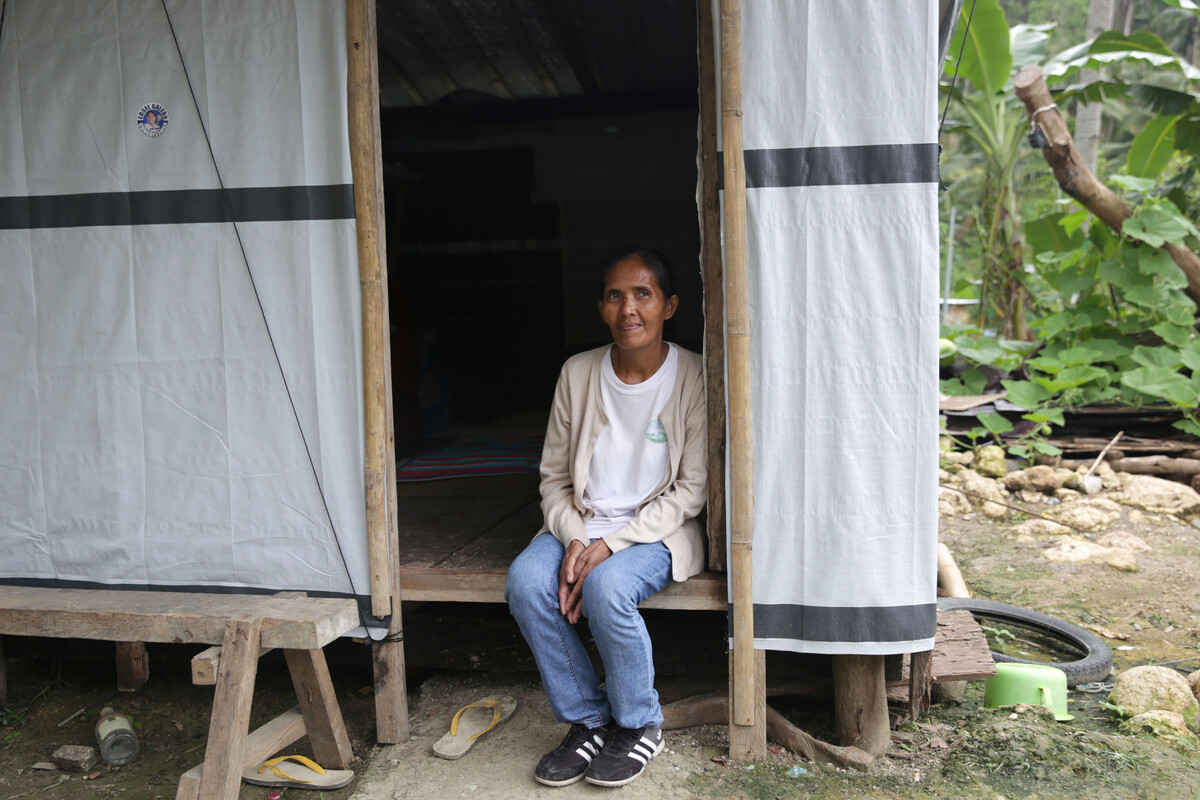
The Philippines has on average 20 severe storms passing through its territory each year. While all have the potential to cause damage, some have been more devastating than others. In December 2021 Super Typhoon Rai passed through the Philippines. It made landfall nine times across seven different provinces leaving a trail of destruction it its wake.
One of the estimated 539,000 people displaced was Ginalyn. She lives on the island of Cebu with her husband and four children. Although they had warning that the storm was coming, Ginalyn did not expect it to be as severe as it was. She recalls the terror of that night, when her family sheltered in a nearby cement house. “We were afraid because the water was coming in. We were fourteen families who evacuated in that house. The roof sounded like a vehicle bumped into another one. Everyone was screaming, praying and scared.”
The next morning Ginalyn was confronted with the damage caused by the storm. “We were not expecting that our house will be damaged by the typhoon. Everything was gone…the roof, walls everything. Nothing was left.” The storm also destroyed the family farm, where Ginalyn had grown chillis for sale.
ShelterBox were able to help Ginalyn and her family with a shelter kit. The tarpaulins and rope were used to construct a new shelter on the site of her their old home, while a hoe was used to recommence farming. While pleased with her new home, Ginalyn still had concerns for the future.
“I’m a bit worried about it because there might be other calamities that would happen. Our children are still in school and I’m worried that they might get ill.”
Pooja – Super Cyclone Amphan, India, May 2020
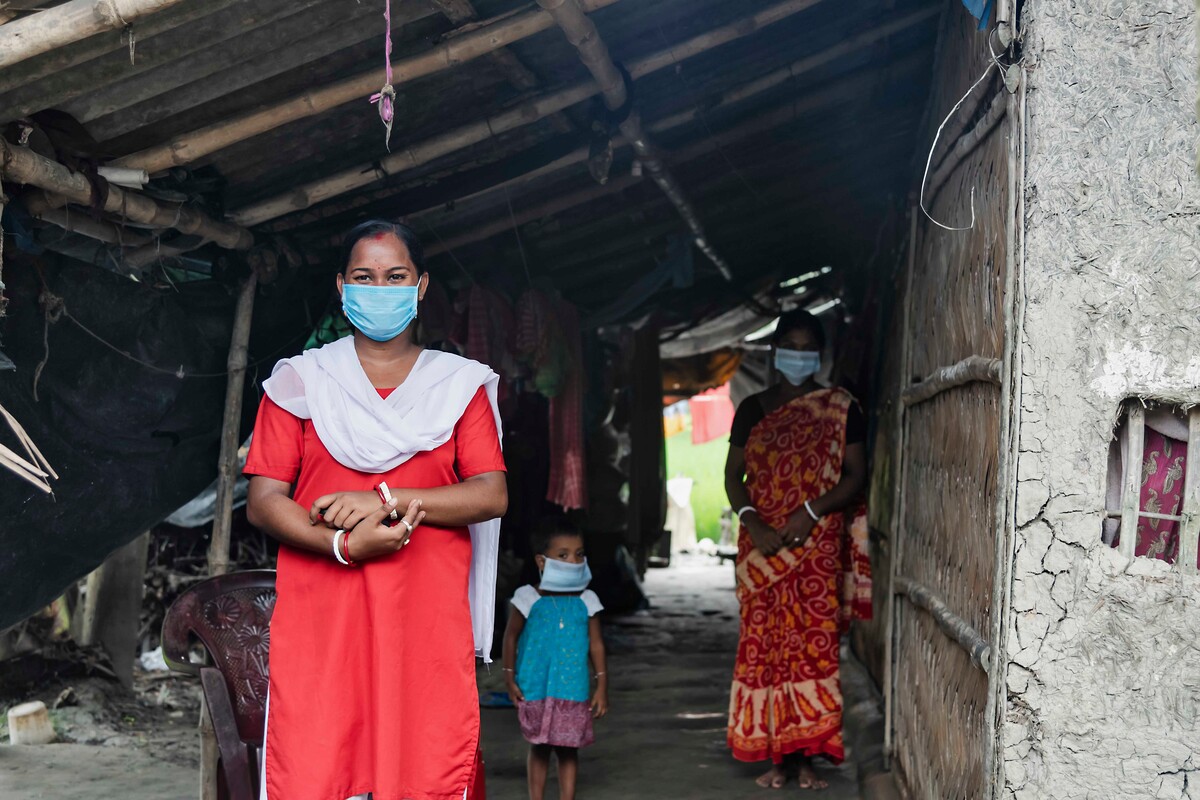
In May 2020 India and Bangladesh were battered by Super Cyclone Amphan. In India alone the storm destroyed 1.7 million homes. Wind speeds reached 180km/h (112mph) and catastrophic rainfall led to flooding. One of the worst hit areas was Sundarbans in India. As well as facing the damage of the storm, people were also confronted with the threat with coronavirus.
Pooja lives in the Sundarbans regions with 10 members of her family, who at the time of the storm varied in ages from 4 to 60. Pooja loved living in a large family home. “The fact that we all live together is the thing I love most about my home. I really love how we all stay together as one family.”
This was almost taken away from Pooja when her home was severely damaged by the devastating winds and flooding brought on by Cyclone Amphan. Pooja remembers the storm as a terrifying experience. “I can’t tell you how horrifying it was,” she said. “I was so scared, I was just standing by the door crying and praying to god.”
Similar to Ginalyn, Pooja’s family knew about the coming storm and had prepared. But they did not realise how strong the winds would be, or the amount of rainfall. Having sent the children to a local cement house the rest of the family planned to stay in their home with their belongings. However the strength of Amphan meant that they too had to flee. The next morning Pooja confronted the damage that had been caused.
“The next morning, we came back to check on the condition of our house, and to see if it had totally fallen down or not. We didn’t bring the kids back with us,” explained Pooja. “The situation was really bad. All of the walls had broken, and the front yard roof had fallen down. Even the back of the house was completely damaged. Only things that I had wrapped under plastic before the storm hit were somewhat still intact – like the bed was still in its position. The entire house was water-logged and full of dirt and leaves, the kitchen was under the debris. It was really bad.”
The family worked together to repair their home. This was made easier when they received a shelter kit from ShelterBox. Tarpaulins and rope helped the repairs and cooking utensils replaced what had been lost. The family started getting back into their routine. But Pooja was worried about facing a similar storm again and wished to prepare – although this was hampered by the coronavirus restrictions in place. She knew how important her home was to her. “A home is important to everyone. No matter who it is, all of us need a roof over our heads. No matter how the house is I need a home to stay, otherwise where will I live?”
Mary-Grace – Typhoon Goni, The Philippines, November 2020
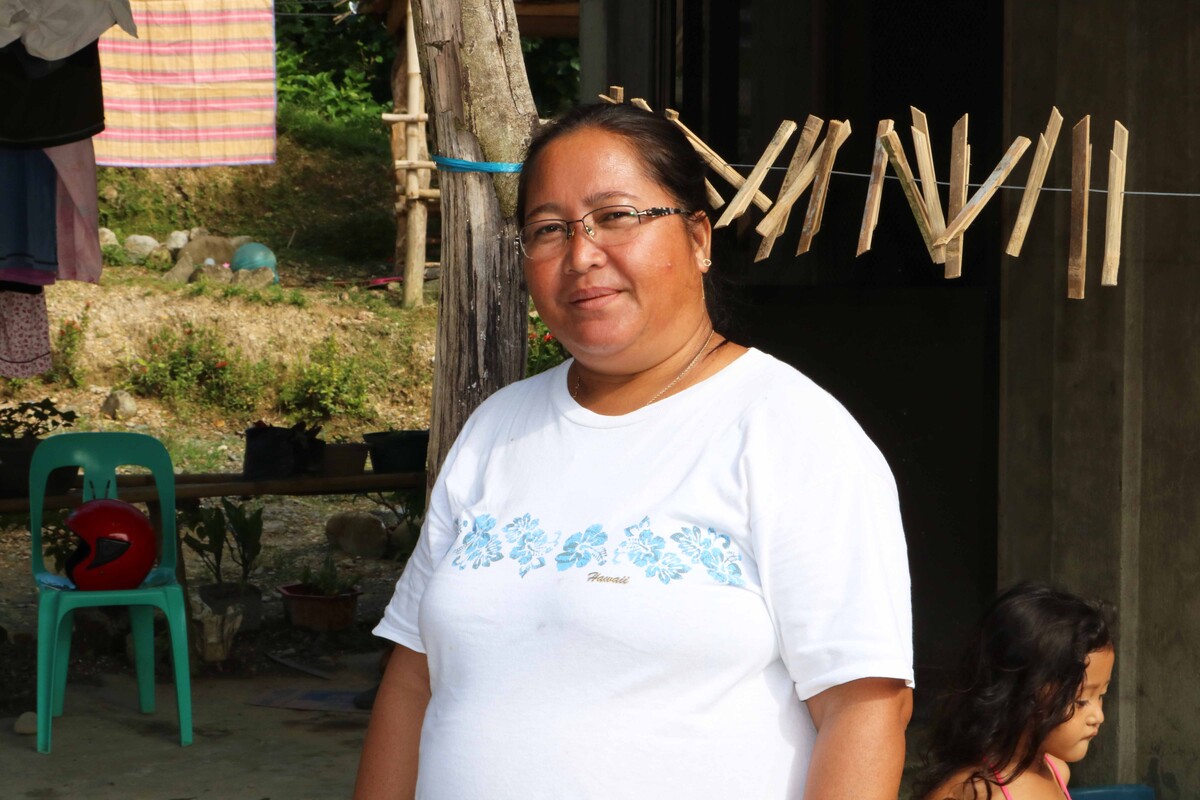
When Typhoon Goni reached the Philippines in November 2020 it was the most powerful storm to strike the country since Typhoon Haiyan in 2013. Wind speeds reached 225 km/h (140mph). The resulting wind damage, flooding and landslides damaged 189,000 homes. Recovery operations were impacted when Typhoon Vamco followed Goni within six weeks, once again destroying homes and shelters.
Mary Grace and her family live in Catanduanes, one of the areas worst hit by Typhoon Goni. Her home was designated as an evacuation shelter for storms. During Typhoon Goni, 18 families sheltered there. With some warning of Goni’s approach, Mary made preparations to help protect her home. However the ferocity of the storm meant that they did not escape damage. Mary remembers the terror the storm caused.
“When we heard it was a super typhoon, the only thing I did was pray so hard until I fainted. I felt sorry for the children because they were already crammed into the room. It was as if a strong wind was pounding the roof.”
During the storm, the typhoon guard blew away, and water poured into the house. The home was severely damaged. The livelihoods of Mary and her husband were also badly affected.
“Life is hard now because our source of income is fishing. My husband and other fishermen in our place can’t go fishing due to bad weather condition since Typhoon Rolly (Goni). We solely rely on the relief goods given to us by the local government and other organisations. When the sea gets a little clearer, they are fishing nearby for our daily consumption. Before the typhoon, I had planted vegetables around the house that I sell to augment our daily expenses, but when the typhoon came, all the crops and vegetables that I planted were destroyed.”
Mary received a shelter kit from ShelterBox. Using the tarpaulins she was able to repair the front of the house, and used other materials to construct a hut to the side. The solar light was extremely helpful as there had been no electricity since the storm. The terror of Typhoon Goni had a lasting impact on the family though. “My fourth child Rojohn experienced trauma because of the storm. He covers his ears whenever it rains, even when it is raining lightly. He is scared. He is asking me when will the rain stop and he cries.”
Mary also had her concerns with future storms. “Everyone should be prepared. My concern is when in times like this, the provision of assistance to partially and totally damaged homes should be fair.”
Susan – Tropical Cyclone Harold, Vanuatu, April 2020
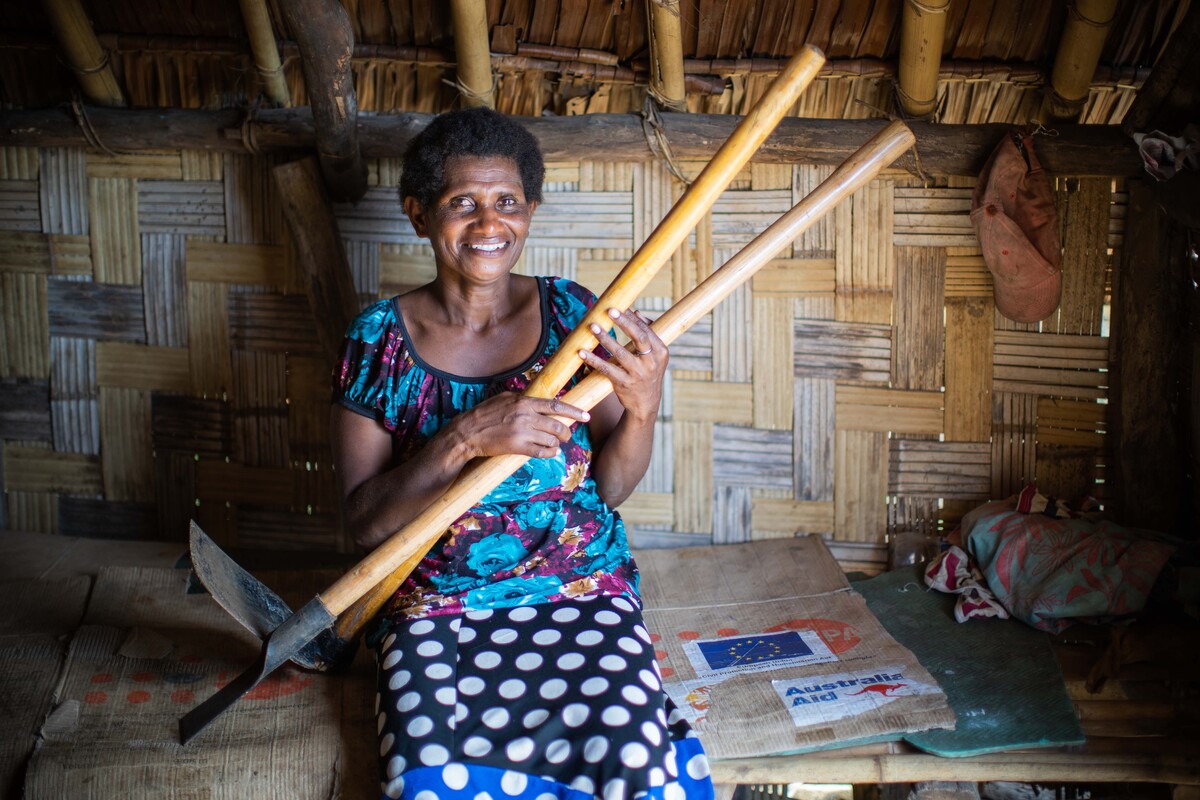
Vanuatu is a nation made up of several small islands in the south-west Pacific. It is no stranger to cyclones, but in April 2020 it was hit by Tropical Cyclone Harold. This category 5 storm battered and destroyed houses, damaged crops and caused power outages. Some areas were completely flattened.
Susan lives on the island of Pentecost, one of the areas worst affected by Cyclone Harold. In her home are fourteen other people, including her family and several children she looks after so they can attend the village school. When first faced with the storm they decided to stay at home, considering it their safe space. Susan said, “When the wind became strong, we were there, we were inside. My son came and said to me, ‘Mama what will happen, will we die or what?’ Then he came and hugged me, and I held him, and said, ‘no we won’t die, we are in our house’.”
Unfortunately the storm grew stronger and started destroying the bamboo walls of Susan’s home. Realising they were no longer safe she took her family to the local safe house. In the morning she returned to find devastation. “Oh when I came out in the morning and I saw my house I felt terrible, I was devastated because my house fell down, but I said thank you to God because no one in my community lost their life. I just came stood there. I didn’t want to touch any of our things. I said leave it, we won’t touch it.”
Being an active member of the local Community Disaster and Climate Change Committee, Susan helped arrange a survey to look at the local damage. She also helped organise the distribution of aid materials to those in the community. She repeatedly put others before herself, until one of the community leaders insisted she take a tarpaulin for herself, to help protect her own children. She used the tarpaulin to cover an old sleeping house where her family stayed, but the cramped conditions were far from ideal. The family also lost many of their personal possessions; including mattresses, mats and Susan’s sewing machine.
With the coronavirus pandemic raging at the time, getting aid to the remote islands was difficult. However ShelterBox was able to present a number of tool kits that were locally distributed by CARE. These were of great help in the community, not only for repairing homes but also for restarting crops that had been wiped out by the storm. “When [the tool kits] came, we shared them with individual families, they took them and went and rebuilt their kitchens and their houses, when they had finished with their houses, I said, ‘now our houses are finished we must go to our gardens and work’. They were so happy, they told me to pass on a huge THANKYOU.”
Despite the tools, recovery on Vanuatu would be difficult. The main local crop of Kava had been destroyed, and new plants would take four years to grow. This had big implications for the local economy and many people’s livelihoods. The storm also destroyed local crops of bamboo and Natungura. These were used in constructing local buildings, and would also take years to recover. Susan was adamant that she only wanted to use these traditional materials to rebuild her home. Even with the difficulties though, Susan looked forward to better times.
“I think this year, I think if our plants are ready for us to harvest and eat, we can eat together in one place,” she said, dreaming of a shared Christmas meal with her extended family. “At Christmas, all the families come, and we eat, we cook and come together in one place. We eat together in our houses, in our kitchens.”
Solidad, Enisa and Risa – Tropical Storm Kai-tak, the Philippines, December 2017
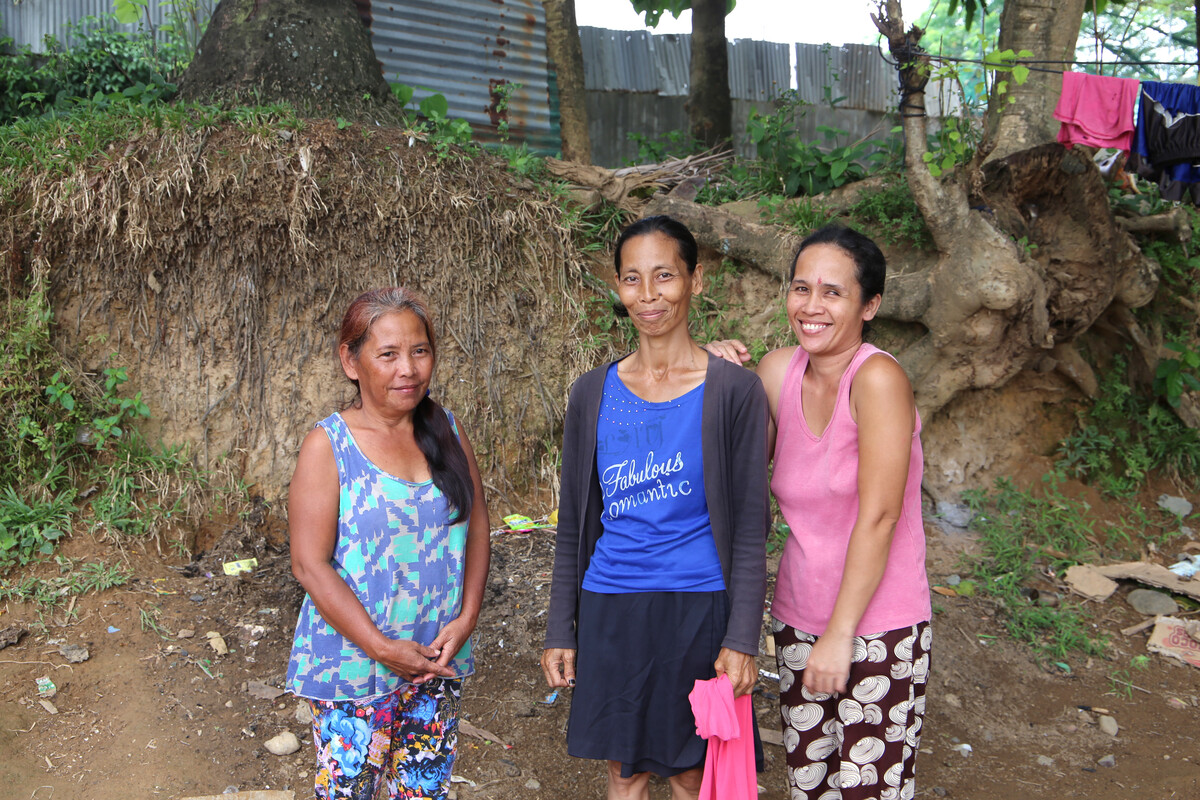
When Tropical Storm Kai-tak reached the Philippines in December 2017, it released two months’ worth of rain in just 48 hours. Flooding and landslides followed, with 30,000 homes destroyed. Unfortunately Tropical Storm Tembin followed only a few days afterwards, displacing 70,000 people.
Among those affected by Storm Kai-tak were three mothers, Solidad, Enisa and Risa. All three lived in Atipolo on Bilrain island. As Atipolo was a dried riverbed it was prone to flooding. When warned of the storm’s approach all three packed clothes for their families to last a couple of days in an evacuation centre.
However, as with many of the other people we featured in this blog, no one expected how severe the storm would prove to be. Enisa said the storm surge happened so quickly – all of a sudden the water was at their shoulders, it was very scary. All three families managed to get to the evacuation centre. When they returned home the following day, everything was gone. And this followed them all previously losing their homes at the hands of Typhoon Haiyan in 2013.
Solidad said they had to stay in the evacuation centre for three days. It was a very difficult time as it was overcrowded. They were only given two meals per day, and they had to sleep on concrete benches that were very cold at night.
One week after the storm each family received a ShelterBox shelter kit, solar lamps, water jugs and blankets. They showed us their solar lights charging on the shelters they had built, remarking that they have been so helpful because there is no electricity. Risa commented that the tarpaulins are very high quality and have been so helpful to rebuild.
After the storm Atipolo was designated a no build area. As such the three ladies and their families would have to move if they wanted to rebuild their homes. Solidad said the ShelterBox aid has been so helpful, and the shelter kit materials can be used again when they relocate.
Despite losing everything, these women are still so positive and said to the ShelterBox team and our supporters: ‘Thank you so much for the very big help.’
Maryuri – Hurricanes Eta and Iota, November 2020, Honduras
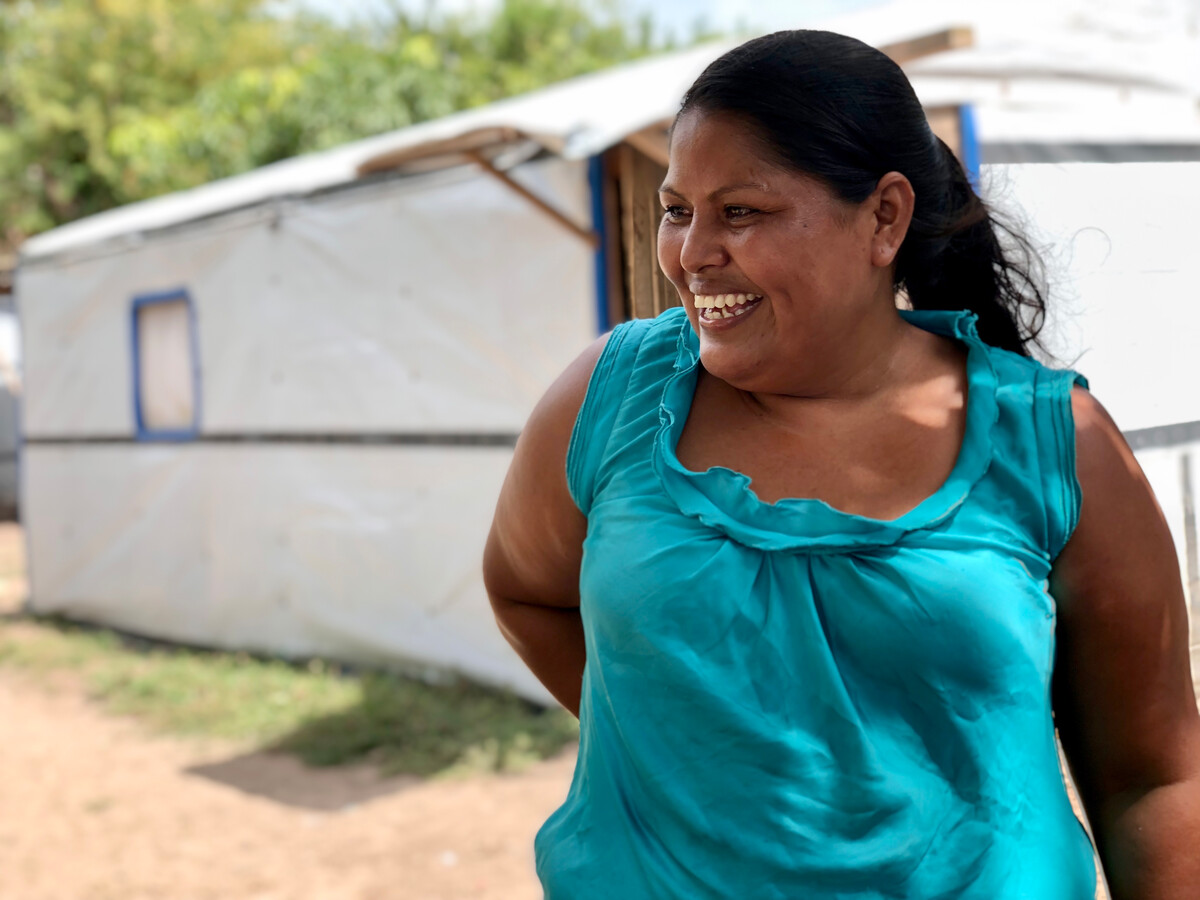
In November 2020 Honduras found itself in the path of two major storms. The first was Hurricane Eta, a category 4 hurricane. It brought a life-threatening storm surge, catastrophic winds, flash flooding and landslides. Just two weeks afterwards Hurricane Iota followed a similar path. This category 5 hurricane was the strongest storm of the year with 260km/h (160mph) sustained winds. It brought further floods, landslides and storm surges to areas still trying to recovery from the previous storm. In Honduras alone over 55,000 people had to evacuate.
One of those was Maryuri, who lives with her partner and five children in northern Honduras. Although she had hoped to avoid flooding the water levels rose at an alarming rate, and the family evacuated to a nearby school. Maryuri recounts the destruction that followed.
“My dad stayed behind in the field on top of a tree and told me the scene when the water destroyed and washed away my house. I lost everything, including my new cooker. When the second flood came, we looked for shelter again but they were already full, so I looked and looked till I found one. At about 7pm my brother came for us in a 4×4 car to take all my family to an elementary school.”
After a second flood, Maryuri and her family returned home. She was shocked by what she saw. “There was nothing. With the second flood, the soil was not able to absorb all the water and still remained high for long time after. We took shelter again beside the highway and that is when someone told us that we were going to get a tarp and other things donated. We stayed there with just very poor nylons and still it rained for three more months.”
Maryuri and her family received ShelterBox aid in the form of a shelter kit, tools, and cooking utensils. Through this they were able to build a new shelter on the site of their old home. Another concern for Maryuri was a lack of work.
“I used to work as a cook in a cafeteria of the banana fields, but now it is closed. The economy was deeply affected, thousands of workers used to be here on the fields, but now they are all destroyed. There is a lot of unemployment, now people just get informal jobs every once in a while. After the flood, the main task was to obtain wood to start again. The water sources are contaminated so now we need to buy water, otherwise we’ll get sick.”
In the future Maryuri hoped to find a new job. However, she had seen how the changing climate had impacted her home, and was concerned about the future. “Storms are more frequent and stronger, I never saw two big storms in less than a week – the rains normally come during October and November.”
“I feel afraid, I haven’t even bought a new bed as I’m afraid to lose it again.”
No one should have to fear losing everything in a storm, however the climate crisis is making severe storms more likely, destroying lives. Support us now so we can help continue to help people after the next disaster.

